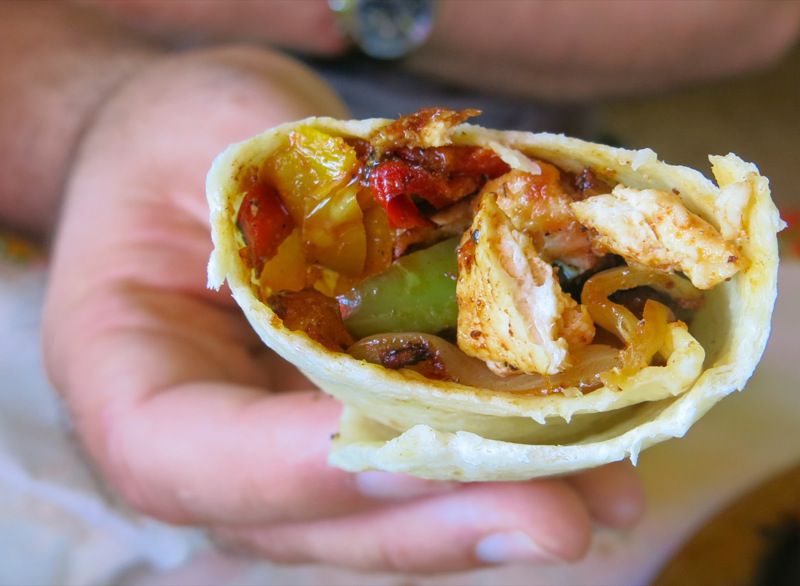

Just over an hour south of the world’s busiest border crossing, lamb and suckling pigs roasted in a caja china (Chinese box) and fresh shellfish served with chenin blanc are as Mexican as Pedro Infante. Sea urchin tostadas, geoduck ceviche, lard-fried lobster, and spider crab a la diabla (devilishly spicy) in the fishing villages of Puerto Nuevo and Popotla are approachable luxuries, while seafood tacos, carne asada in Mexicali, carne adobada tacos (regional name for tacos al pastor ), beef birria, and steak tortas (sandwiches) served on ciabatta-style buns form a newish street-food culture. Baja draws from the nearby states of Sonora, Sinaloa, and Jalisco, among others but its olive oil, vineyards, and impressive seafood-combined with a lack of any single tradition-opened the door for modern Mexican chefs to cook with sea urchin, geoduck, abalone, and lamb and pair them with exceptional wine. The inventive dishes here are the surest example of Mexico’s evolution in authentic cuisine.

At the Feria Nacional de San Marcos, Mexico’s biggest block party (not even the Mexican Revolution could shut it down), flautas (fried rolled tacos ), tacos piratas (flour tortilla with carne asada and melted cheese), guava rolls from Calvillo, and a parade of amazing antojitos are devoured to prepare for a month filled with tequila and beer.īeef birria.


Chichi-sounding antojitos (appetizers) like esmeriles (gorditas) and chiquiadas (fried quesadillas) are fitting for one of Mexico’s most industrious states. I can’t leave town without eating bolillos con crema (bread rolls stuffed with Mexican cream, ham, and pickled jalapeños) or the carnitas in San Francisco de los Romo delivered by my primos (cousins) in a grease-soaked paper bag. The red pozole (pre-Hispanic hominy stew) and red enchiladas I ate with my grandmother’s first cousin Chelo are some of the best in Mexico, while goat and lamb birria and suckling-pig tacos at the Mercado Juárez, chased with pickled chile de bola (fresh chili cascabel), make for a glorious Sunday-morning feast. So let me share a photo album of my quest to explore the delicious foods and fascinating culinary traditions of Mexico. While there are timeless Mexican plates that will remain until the end of days-mole (a main dish consisting of a thickened mixture of chilies and other ingredients), birria (pit- or oven-roasted goat in a spicy sauce), tacos de canasta (steamed in a basket)-new ingredients, ideas, and trends emerge in Mexican gastronomy each year. And even a dish like enchiladas rojas (red enchiladas) varies from region to region in its style of tortilla, chili pepper, and salty cheese sprinkled on top. The carnitas (confit-style pork) in the cities of Quiroga, Uruapan, and Sahuayo have subtle differences. In Mexico City there are dishes you can find only in the neighborhood of Tepito, like migas (pork-leg-bone soup thickened with breadcrumbs and tortillas) and cabezas (chicken-head tostadas). The foods of the states of Yucatán, Chihuahua, Chiapas, and Nayarit are as different as those of France, Germany, Britain, and Slovenia.


 0 kommentar(er)
0 kommentar(er)
